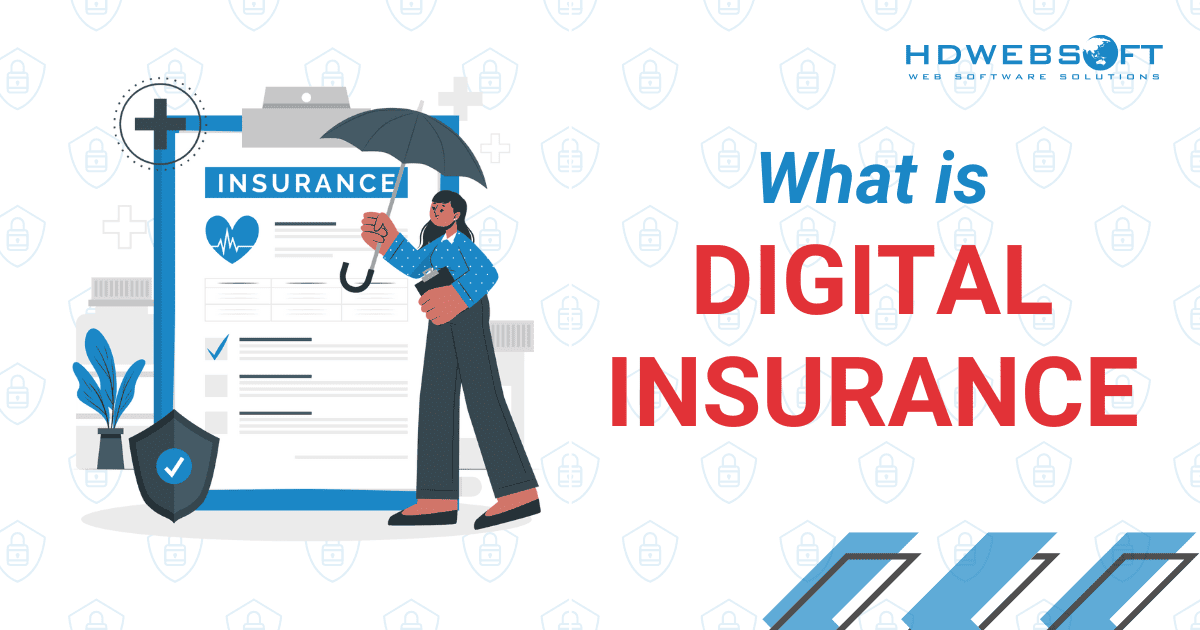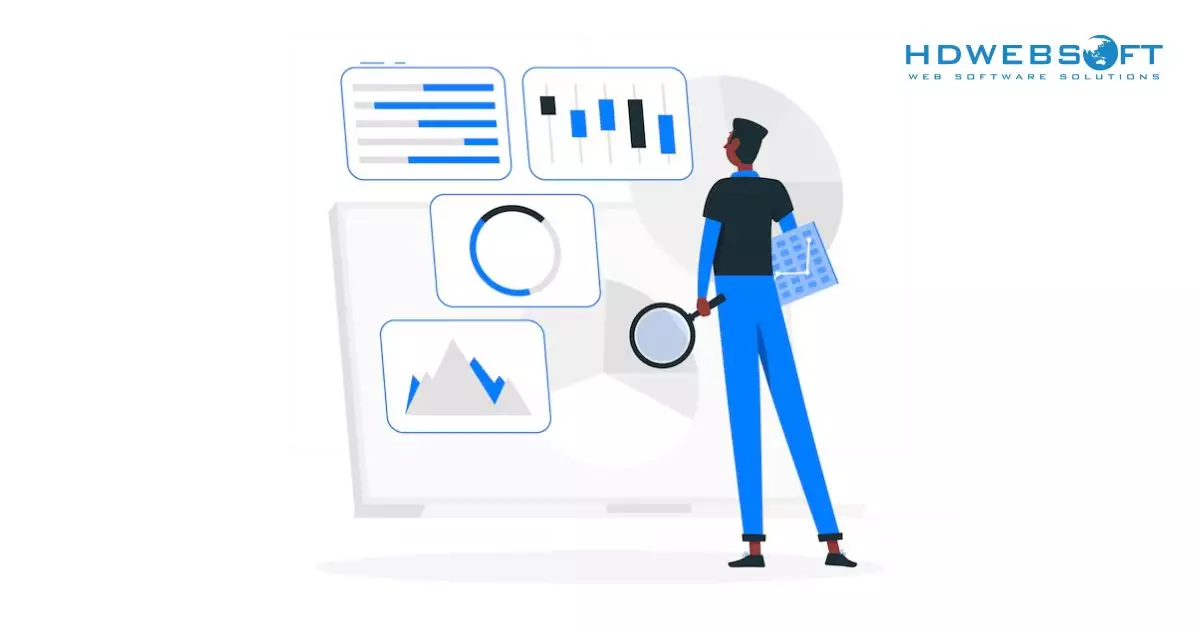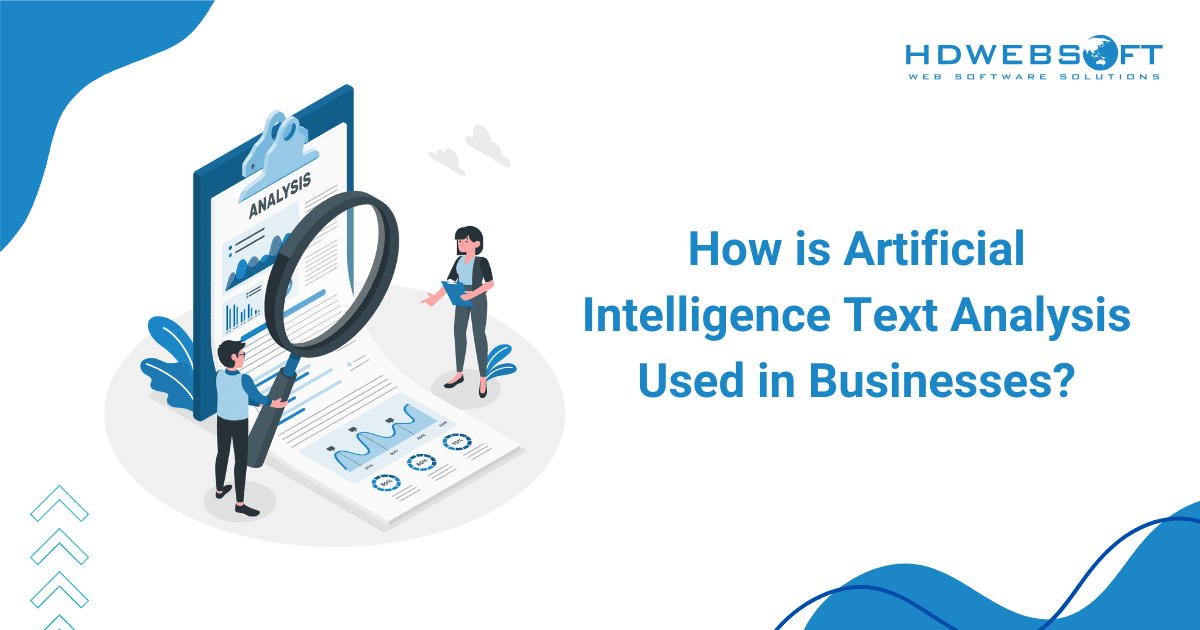
What is Digital Insurance?
Digital insurance is reshaping the industry by leveraging advanced technologies to streamline policy management, claims processing, and customer interactions. In today’s rapidly evolving technological landscape, traditional insurance practices are being replaced by innovative digital solutions.
This blog explores the essence of digital insurance, highlighting its core features, significance, and the technologies driving its adoption. Additionally, we will examine the key challenges facing digital insurance providers and how they are addressing them to create a more seamless and customer-centric insurance ecosystem.
Understanding the Basics of Digital Insurance

So, what is digital insurance? In simple terms, it refers to the use of digital technologies to deliver and manage insurance services. As a result, it replaces traditional, paper-based processes with advanced technologies, making insurance more accessible and efficient.
In today’s rapidly evolving technological landscape, e-insurance has emerged as a transformative force within the insurance sector. By leveraging advanced digital tools and platforms, it aims to enhance efficiency, improve customer experiences, and streamline operations.
The digital insurance platform market is poised for significant expansion in the coming years. It’s projected to reach $271.04 billion by 2029, with a compound annual growth rate of 15.2%. This growth is largely driven by a heightened focus on customer engagement and the rise of usage-based insurance models. Moreover, expanding digital ecosystems increased attention to climate and environmental risks, and growing cybersecurity concerns further contributed to the market’s rapid development.
Core Features of a Digital Insurance Platform
A well-designed e-insurance platform incorporates several key features that enhance accessibility, efficiency, and security. These elements work together to create a seamless experience for both insurers and policyholders.
- User-Friendly Interfaces: Intuitive platforms that allow customers to easily purchase policies, manage accounts, and file claims online. These interfaces reduce the complexity of traditional insurance processes, making insurance more accessible to a wider audience.
- Personalized Services: Utilization of data analytics to offer tailored digital insurance products that meet individual customer needs. By analyzing user behavior, insurers can recommend policies that align with specific risk profiles and preferences.
- Automated Processes: Implementation of AI and machine learning to automate underwriting and claims assessments, reducing processing times. In the long run, it minimizes human error and accelerates policy issuance and claim settlements, enhancing customer satisfaction.
- Real-Time Data Access: Integration with IoT devices to monitor insured assets and adjust policies based on real-time data. This allows for dynamic pricing models and proactive risk management, leading to fairer premiums and improved loss prevention.
- Enhanced Security: Deployment of advanced cybersecurity measures to protect sensitive customer information. Encryption, biometric authentication, and blockchain technology help safeguard policyholder data, ensuring compliance with regulatory standards.
In the latter section, we’ll delve deeper into the technologies that are driving the evolution of digital insurance.
Why is Digital Insurance Important?
Beyond convenience, e-insurance brings significant advantages to both customers and insurers alike. Let’s see what benefits it brings to the table.
Going Beyond Customer Expectations
Modern customers expect effortless and personalized interactions with their service providers. Electronic insurance meets these expectations by offering user-friendly mobile apps, instant claim processing, and AI-driven policy recommendations. The ability to access policy details anytime and receive instant support elevates the overall experience, setting digital insurers apart from traditional competitors.
Furthermore, chatbots and virtual assistants powered by AI enable customers to receive real-time answers to their queries. As a result, it eliminates the need for long wait times. Moreover, these digital advancements create a more interactive and responsive customer journey. This is essential for building long-term loyalty, especially in an industry that is becoming increasingly competitive.
Positive Outcomes Through Data Utilization
Data plays a crucial role in shaping effective insurance policies. Digital insurance platforms collect and analyze vast amounts of data to identify trends, assess risks accurately, and develop tailored policies. Predictive analytics also enables proactive decision-making, reducing fraud risks and ensuring fair pricing models. Furthermore, insurers can use real-time data to adjust policies dynamically, offering more personalized and competitive products to policyholders.

With data utilized neatly, digital insurance can help customize insurance policies to the situation.
By utilizing AI-powered data analytics, insurers can effectively detect potential fraud in claims, helping to minimize financial losses. Consequently, legitimate policyholders can receive their claims without unnecessary delays, ensuring a smoother and more transparent claims process. This level of precision in data processing strengthens risk assessment strategies and contributes to the overall stability of the insurance sector.
Reduced Costs for Insurers and Policyholders
One of the most compelling benefits of e-insurance is cost reduction. Automating repetitive tasks like underwriting, claims processing, and customer support eliminates manual inefficiencies, saving insurers valuable resources. What’s more, digital insurance platforms reduce paperwork, administrative expenses, and operational overhead. These savings can be passed on to customers in the form of lower premiums, making insurance more affordable and accessible.
Moreover, digital underwriting solutions assess applications more accurately, eliminating human errors and ensuring fair premium pricing. With fewer operational costs, insurers can allocate more resources toward improving coverage plans and expanding their services. Ultimately, it benefits both customers and the company’s long-term growth.
Enhancing Employee Experiences
Employees in the insurance sector benefit significantly from digital advancements. Electronic insurance solutions streamline internal workflows, reducing mundane tasks and enabling employees to focus on higher-value responsibilities. AI-powered tools assist with data analysis, fraud detection, and customer interactions, improving productivity and job satisfaction. With smoother processes and reduced workload burdens, employees can deliver better service and engage in more meaningful client interactions.

Digital insurance will help enhance not only customers but also your employee work experience.
Additionally, remote work capabilities have been enhanced with digital platforms, allowing insurance professionals to access customer data securely from anywhere. This flexibility creates a better work-life balance while ensuring that services remain uninterrupted, even in times of crisis.
Leveraging Low-Code Capabilities
The implementation of digital insurance solutions no longer requires extensive IT expertise. Low-code and no-code platforms empower insurers to create and modify applications quickly, reducing development time and costs. Resultantly, these platforms allow digital insurers to launch new products faster, respond to market trends more effectively, and customize solutions to meet specific customer needs. By reducing reliance on complex coding, insurers enhance agility and innovation, ensuring they stay ahead in the competitive landscape.
Plus, low-code technology enables rapid prototyping, allowing insurers to test new features before fully deploying them. This adaptability is crucial in an industry where customer demands and regulatory requirements constantly evolve. The ability to integrate these platforms with existing systems further improves operational efficiency, making digital transformation smoother and more accessible.
The Technology Behind Digital Insurance
The rapid evolution of technology has significantly transformed the insurance industry, leading to the rise of digital insurance. These advancements not only streamline operations but also provide customers with more tailored policies and faster claims processing.
Let’s take a look at this e-insurance diagram to have a grasp of how technologies fuel the component of the insurance landscape:
As you can see, there are many to know of. However, we’re going to list down the recent technologies driving this transformation.
Artificial Intelligence Systems
AI is a game-changer in electronic insurance, automating processes that traditionally require human intervention. Chatbots powered by AI provide instant customer support, while intelligent underwriting systems analyze vast datasets to assess risks with precision.
Furthermore, AI-driven claims processing accelerates settlement times by automatically detecting anomalies and fraud, ensuring fair and transparent transactions. With AI, insurers can offer predictive insights, enabling proactive policy adjustments based on changing customer behaviors and market conditions.
Machine Learning and MLaaS
ML enhances digital insurance by enabling data-driven decision-making. In particular, insurers use ML algorithms to assess customer profiles, detect fraudulent claims, and personalize policy recommendations.
As the current advancement, Machine Learning as a Service (MLaaS) provides insurers with pre-built ML models and cloud-based infrastructure. As a result, they’re allowed to implement sophisticated analytics without developing in-house AI capabilities. Also, ML-powered tools continuously refine risk assessment models, leading to more accurate pricing and coverage customization.
Software as a Service (SaaS)
SaaS platforms empower insurers by providing cloud-based solutions that streamline operations. These platforms allow insurance companies to manage policies, automate workflows, and analyze customer data. All is done effortlessly without investing in expensive IT infrastructure.
In addition, SaaS-based e-insurance solutions offer scalability and flexibility, enabling companies to quickly adapt to market demands. These platforms integrate with third-party applications, facilitating seamless customer interactions and improved service delivery.
Big Data and Analytics
Big Data is at the core of digital insurance, providing insurers with deeper insights into market trends and customer behavior. Advanced analytics tools process vast amounts of structured and unstructured data to identify patterns, optimize risk assessments, and enhance fraud detection.
Predictive analytics enables insurers to anticipate claims, adjust pricing models, and create more customized policies. By leveraging data-driven insights, insurance companies can make more informed decisions and offer policies tailored to individual needs.
Data Visualization
Visualization tools help insurers interpret complex data and gain actionable insights. Dashboards powered by AI and Big Data allow insurance professionals to monitor claim patterns, customer demographics, and market trends in real time.
Ultimately, these visual representations simplify decision-making, enabling insurers to quickly identify opportunities and risks. Data is made more accessible and comprehensible, and visualization tools play a crucial role in shaping the strategies of modern electronic insurance providers.

Digital insurance visualizes data for better interpretation and decision-making process.
Internet of Things (IoT)
IoT devices have revolutionized digital insurance by offering real-time data collection. Smart home sensors, connected cars, and wearable health devices provide insurers with valuable insights into customer behavior and potential risks.
For instance, telematics in vehicles monitors driving habits, enabling insurers to offer usage-based policies and incentives for safe driving. Similarly, health insurers can adjust premiums based on activity levels tracked through fitness wearables, promoting healthier lifestyles.
Blockchain Technology
Blockchain technology enhances security, transparency, and efficiency in e-insurance. It provides tamper-proof records of transactions, reducing the risk of fraud and data manipulation. For example, smart contracts powered by blockchain automate policy enforcement and claims processing, eliminating delays and disputes.
Additionally, blockchain application ensures secure sharing of customer data across different stakeholders. In the long run, it helps improve trust and operational efficiency in the insurance ecosystem.
Challenges for Digital Insurance
The transition to e-insurance has brought numerous benefits, but it also presents several challenges that insurers must overcome to ensure a smooth and successful transformation. Let’s take a closer look at some of the key challenges in the industry.
Integrating Traditional and Modern Systems
One of the biggest hurdles in adopting digital insurance is merging outdated legacy systems with modern technology. Many insurance companies have relied on traditional infrastructure for decades. Therefore, it’s difficult to implement new digital solutions without disrupting existing operations.
The challenge lies in ensuring a smooth transition while maintaining data integrity, compliance, and operational efficiency. Finding the right balance between innovation and continuity is crucial for insurers looking to modernize their services.
Training, Testing, and User Experience
With the rise of modern insurance, employees must adapt to new tools, platforms, and workflows. However, training staff and ensuring they are comfortable using digital systems can be a complex and time-consuming process.
Moreover, testing new platforms before full-scale implementation is essential to avoid potential disruptions. At the same time, insurers must prioritize user experience to ensure employees and customers can navigate digital platforms effortlessly. Striking the right balance between functionality and usability is essential for a successful digital transition.
Managing the Explosion of Data
The amount of data generated in digital insurance is growing exponentially. Insurers collect vast amounts of information from policyholders, IoT devices, and external sources. Hence, it’s increasingly difficult to manage and analyze effectively.
Without proper data governance strategies, organizations may struggle to extract meaningful insights, leading to inefficiencies and missed opportunities. Thus, implementing advanced data analytics and AI-driven solutions can help insurers make better use of their data while staying ahead in the competitive landscape.

Data can be managed and classified thanks to digital insurance technology.
Ensuring Cybersecurity and Data Privacy
As insurers embrace digital transformation, cybersecurity threats, and data privacy concerns have become major challenges. Modern insurance platforms store sensitive personal and financial information, making them attractive targets for cybercriminals. Any data breach can severely damage an insurer’s reputation and erode customer trust.
No worries! In order to mitigate these risks, companies must invest in security measures, encryption protocols, and compliance with data protection regulations. Thereby providing the safety of customer information.
Addressing Resource Constraints
Implementing and maintaining digital insurance solutions requires significant investments in time, money, and expertise. Many insurers face resource constraints, including budget limitations and a shortage of skilled professionals with expertise in emerging technologies.
Without the right talent and financial support, companies may struggle to keep up with industry advancements. Accordingly, strategic workforce planning and partnerships with technology providers can help insurers bridge these gaps and drive innovation effectively.
Conclusion
The advent of digital insurance marks a transformative period in the insurance industry, offering enhanced services, improved efficiency, and personalized customer experiences. However, adapting to this digital shift can be challenging for some insurers. Those unsure how to implement digital transformation effectively can seek assistance from an insurance software development company for expert consulting.










